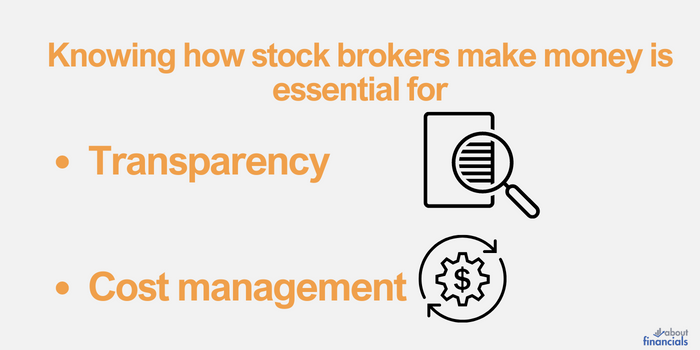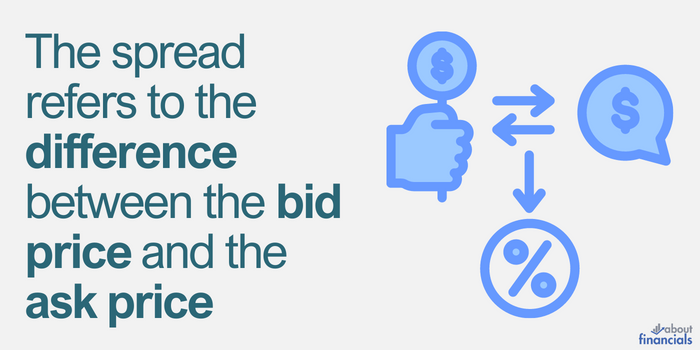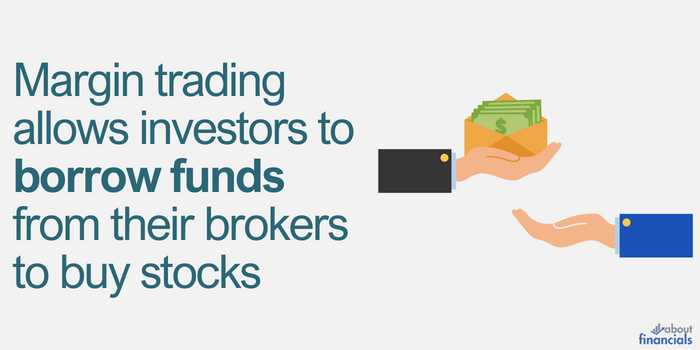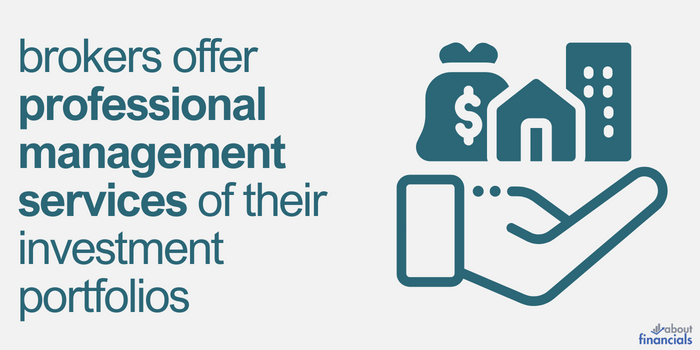Stock brokers play a pivotal role as intermediaries between you and the financial markets, executing your orders and providing valuable services.
In this article, we’ll explore the basics of how stock brokers generate revenue and why it’s essential to be aware of their income sources.
Role of stock brokers
From the humble beginnings of stock markets till today’s sophisticated stock exchanges, stock brokers act as a bridge connecting individual investors to the vast world of stocks, bonds, and other financial instruments. They facilitate the buying and selling of securities on various exchanges and over-the-counter (OTC) markets. When you place an order through your broker, they execute it on your behalf, striving to get you the best possible price for your trade.
Knowing how stock brokers make money is essential for two key reasons

- Transparency and Informed Decision-making: When you’re aware of the revenue sources of your broker, you can assess whether their interests align with yours. It helps you make more informed choices about the brokerage services and products you opt for.
- Cost Management: Different brokers have varying fee structures, and these costs can significantly impact your overall returns. Understanding how brokers earn money empowers you to seek competitive pricing and potentially reduce your trading expenses.
How Stock Brokers Make Money – 8 Revenue Streams
1. Commission-based revenue model

In the past, commission fees were the primary way brokers made money. When you place a trade, whether buying or selling a stock, your broker charges you a commission for their services. The commission is usually a fixed amount or a percentage of the trade’s total value. For example, a broker might charge $5 per trade or 0.1% of the trade value.
Different Commission Structures
Flat Fee: Some brokers offer a flat commission rate regardless of the trade size. This can be beneficial for frequent traders who execute large orders as they pay the same commission, irrespective of the trade’s value.
Tiered: In a tiered commission structure, the fee varies based on the trade size. Smaller trades might have a higher percentage commission, while larger trades may incur a lower percentage fee.
Percentage-based: Many brokers charge a commission as a percentage of the trade value. This means that the commission increases as the trade size grows.
2. Spread and bid-ask spread

Apart from commission fees, stock brokers also profit from the “spread” in stock trading. The spread refers to the difference between the bid price (the highest price a buyer is willing to pay for a stock) and the ask price (the lowest price a seller is willing to accept for the same stock). The bid-ask spread represents the cost of executing an immediate trade and is a fundamental aspect of liquidity in the market.
How brokers profit from the bid-ask spread
When you place a market order to buy or sell a stock, the trade is executed at the prevailing market price. However, the actual executed price is not the price you see on the screen (the “last traded price”), but rather the average between the bid and ask prices at the time of execution.
For example, let’s say you want to buy a stock, and the bid price is $50, while the ask price is $51. If you place a market order, your broker might fill your order at $50.50, which is the midpoint of the bid and ask prices. The broker keeps the difference between the bid and ask prices (in this case, $0.50) as their profit.
The bid-ask spread is a hidden cost that traders incur with each transaction. As the spread widens, the cost of trading increases, impacting your potential profits. Liquid stocks with high trading volumes often have narrow bid-ask spreads, making them more cost-effective to trade.
However, less liquid stocks and those with lower trading volumes tend to have wider spreads, which can erode your returns, especially for frequent traders. Additionally, during periods of high volatility or low liquidity, the bid-ask spread can widen significantly, making it more challenging to execute trades at favorable prices.
3. Margin interest

Margin trading allows investors to borrow funds from their brokers to buy stocks or other financial instruments. The amount borrowed is called “margin,” and it acts as leverage, amplifying both potential gains and losses. Margin trading can provide traders with greater buying power, enabling them to control larger positions than their available cash balance would allow.
How brokers charge interest on borrowed funds
When you trade on margin, you are essentially borrowing money from your broker. As with any borrowed funds, there’s a cost involved in the form of interest. Brokers charge interest on the margin amount, and the rate is typically determined by the broker’s policies and prevailing market conditions.
Interest on margin is typically calculated on a daily basis and added to your account at the end of each trading day. The interest rate can vary based on the size of the margin loan and the broker’s terms. It’s essential to be aware of these interest charges as they can significantly impact your overall trading costs, especially if you hold positions for an extended period.
Benefits of margin trading
Margin allows you to control a larger position with a smaller cash investment, potentially magnifying your profits.
Moreover, margin can enable you to diversify your portfolio more extensively, as you don’t need to allocate all your available funds to a single trade.
Risks of margin trading
While margin magnifies gains, it also multiplies losses. A sharp market downturn can lead to substantial losses, and you may be required to deposit additional funds (a margin call) to maintain your positions.
Additionally, paying interest on borrowed funds can eat into your profits, especially if you hold positions for an extended period or use excessive leverage.
4. Payment for order flow (PFOF)
Payment for Order Flow is a practice in which brokers receive compensation from market makers or trading firms for directing their clients’ trade orders to these firms for execution. Instead of executing the trades on exchanges with potentially better prices, brokers route the orders to these market makers, who, in turn, pay the brokers for the order flow.
5. Asset management and advisory fees

In addition to facilitating trades, some brokers offer asset management services, providing clients with professional management of their investment portfolios. Asset management allows investors to delegate the day-to-day decision-making to experienced professionals, freeing them from the burden of actively managing their investments.
Asset management services come with various fee structures, and it’s essential for investors to understand how they are charged:
- Asset-based fees: Many asset managers charge a percentage of the total assets they manage. For example, an asset manager may charge 1% of the portfolio’s value annually. As the portfolio grows, the fees increase, incentivizing the manager to generate positive returns.
- Performance-based fees: Some asset managers may charge a base fee along with an additional fee based on the portfolio’s performance. The performance fee is typically a percentage of the gains achieved above a predefined benchmark.
- Fixed fees: Some brokers may offer asset management services with fixed fees, where clients pay a set amount regardless of the portfolio’s size or performance. This fee structure provides predictability but might not align the manager’s incentives with the investor’s best interests.
6. Securities lending
Securities lending is a practice where brokers lend out the securities held in their clients’ investment accounts to other market participants, such as institutional investors or hedge funds. This practice is prevalent in various financial markets and serves several purposes.
When brokers lend securities from their clients’ accounts, they charge borrowing fees to the borrowing parties. These borrowing fees are essentially interest payments for borrowing the securities, and they represent the primary way brokers generate revenue from securities lending.
7. Premium services and subscriptions
Many brokerage firms offer premium services and subscriptions that provide clients with access to exclusive research reports, advanced trading tools, market insights, and other valuable resources. These premium offerings aim to enhance the trading experience and provide clients with a competitive edge in the financial markets.
Premium services are often offered through subscription models, where clients pay a recurring fee for access to the service. Subscription fees can vary based on the level of service and the features included. Some common premium services include:
Real-time market data: Access to live stock quotes, news feeds, and real-time market data can be crucial for active traders and investors who require up-to-the-minute information.
Technical analysis tools: Advanced charting software, technical indicators, and drawing tools enable clients to conduct in-depth technical analysis for making trading decisions.
Research reports: Subscribers may gain access to proprietary research reports, analyst recommendations, and insights from industry experts.
Educational resources: Premium services may include educational webinars, tutorials, and resources designed to enhance clients’ financial knowledge and trading skills.
8. Proprietary trading
Proprietary trading refers to when brokerage firms use their own capital to engage in trading activities. Unlike executing trades on behalf of clients, proprietary trading involves taking positions in various financial instruments, such as stocks, bonds, options, and derivatives, with the aim of generating profits for the brokerage firm.
Proprietary trading can introduce certain conflicts of interest that traders should be aware of:
- Trade priority: In some cases, a broker’s proprietary trading desk might prioritize the firm’s own trades over client orders, potentially affecting the execution of client orders.
- Market impact: Large proprietary trades executed by the broker can influence market prices and liquidity, which may impact the performance of client trades.
- Insider information: To avoid unfair advantages, brokers are required to have strong internal controls to prevent proprietary traders from accessing confidential client information that could influence their trading decisions.
Regulatory authorities monitor proprietary trading to ensure compliance with relevant laws and regulations, aiming to protect the interests of both the brokerage firm and its clients.
Final thoughts
Understanding how stock brokers make money is vital for investors seeking to make informed financial decisions. We have explored various revenue models and practices employed by brokers to generate income.
Continuously educate yourself about financial markets, keep abreast of industry trends, and leverage reputable resources to enhance your knowledge and skills as an investor. The more you know, the better equipped you’ll be to navigate the complexities of the financial world and work towards your financial aspirations.
Thank you for joining us on this exploration of how stock brokers make money. May your journey in the world of business and finance be rewarding and fruitful.

